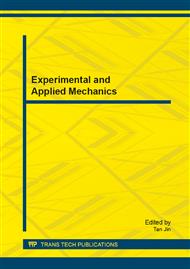p.25
p.33
p.41
p.47
p.53
p.60
p.66
p.71
p.78
Effect of FWD Testing Position on Modulus of Subgrade Reaction
Abstract:
This paper discusses the variation of the Modulus of subgrade reaction (k) backcalculated from slab deflection basins, interactive with the location of the Falling Weight Deflectometer (FWD) load pulse, and curling of slabs due to daily temperature variations. The k-value was calculated following the AASHTO design guides procedures, while deflection basins were recorded at an interval of 3 to 4 hours along the day on an instrumented concrete pavement test section in West Virginia. The state of deformation of the slabs are continuously monitored, through dowel bar bending measurements and records of the temperature gradient profiles through the slab thickness, as well as joint openings every 20 minutes. The results indicated that the backcalculated k-values are greatly affected by the positive temperature gradient, and the least variation in (k) was found in the slab center. In order to minimize errors in back-calculations of k-values, it is recommended to perform the FWD test for recording deflection basins in the interior of the slab during late evening or in the early morning.
Info:
Periodical:
Pages:
53-59
Citation:
Online since:
February 2014
Authors:
Price:
Сopyright:
© 2014 Trans Tech Publications Ltd. All Rights Reserved
Share:
Citation:


